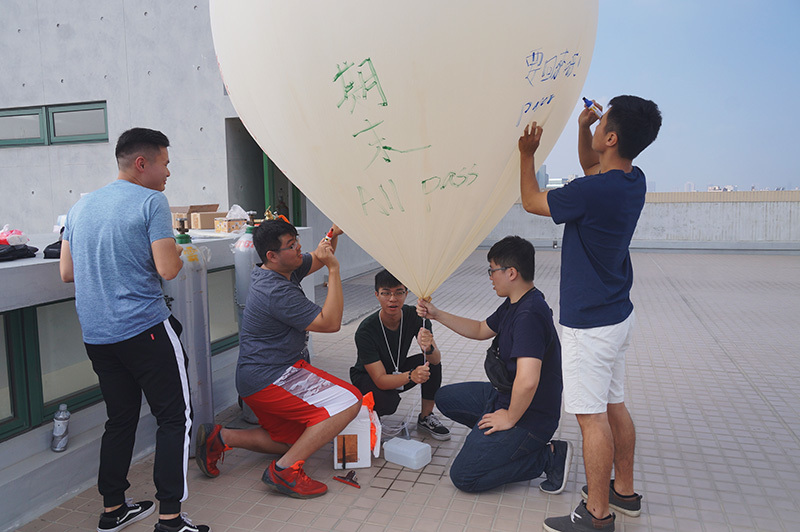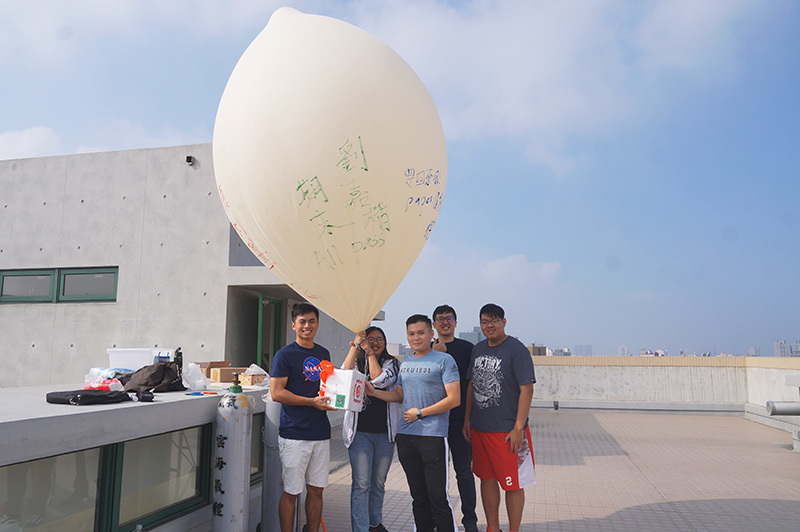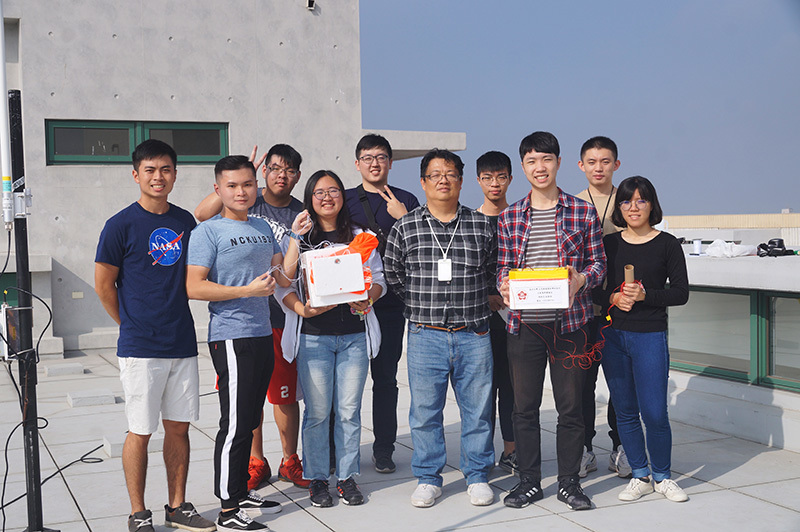NCKU Launches Weather Balloon to Gauge Air Pollution
On January 5th, Associate Professor Alfred B.Chen from the NCKU’s Institute of Space and Plasma Science led a team of nine students in launching two weather balloons equipped with apparatuses weighing one to two kilograms from the NCKU campus. One balloon will track the impact of air pollution in Tainan being brought in by high altitude winds while the other balloon will track the changes in ultraviolet light intensity and ozone density at different altitudes.

NCKU Launches Weather Balloon to Gauge Air Pollution
The two weather balloons were actually final projects for the “Space and Astronomical Apparatus Development” course at the institute. Nine students conducted their experiments in two groups.
The first weather balloon primarily gauges the effects brought on by air pollution in Tainan which is carried in by high altitude winds. The balloon will take one atmospheric sample once every 3, 5, and 8 kilometers traveled. After the sample has been collected, the mission payload will detach from the balloon via a small blast.

Nine students conducted their experiments in two groups
The second balloon has been fitted with an ozone detector and a UV ray probe. The research objective is to monitor the changes in ozone density and UV ray intensity at multiple altitudes. Data received from the balloon in transit will be simultaneously analyzed upon receipt.
Alfred B.Chen expressed that compared to sounding rockets or man-made satellites, weather balloons are safer, have lower research costs, higher flexibility, shorter mission periods, and are recyclable among other advantages. Conducting experiments with these balloons on a university campus does not endanger public safety. In Taiwan, NCKU is the only university that offers a course where students are allowed to launch weather balloon experiments.

The two weather balloons were actually final projects for the “Space and Astronomical Apparatus Development” course at the institute




